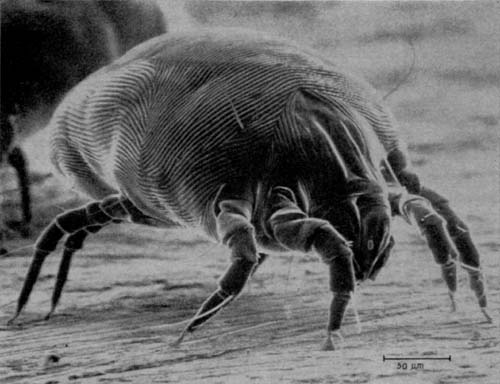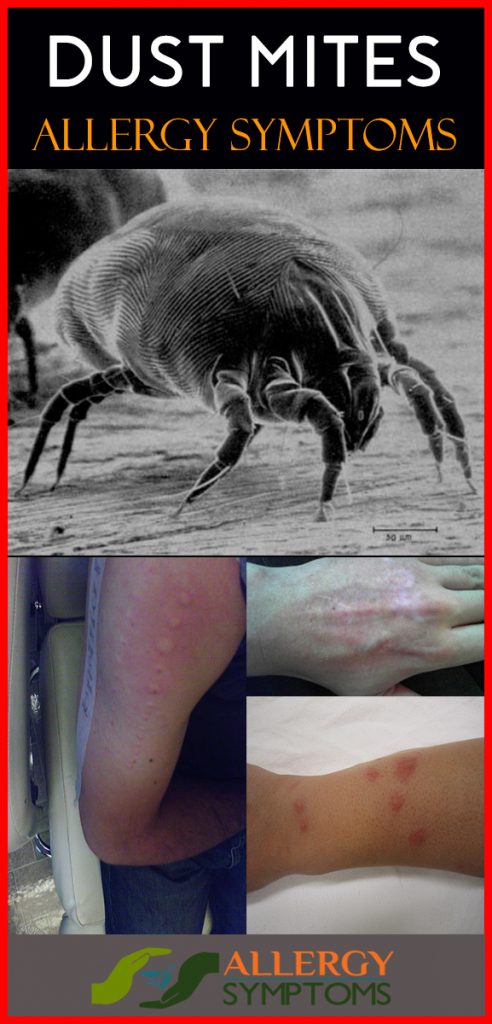Dust mite allergy is an allergic reaction to minute germs that usually conscious in house dust. The sings of the dust mite allergy comprise those mutual to hay fever, such as sneezing and also the runny nose.
Now a day’s many people are suffering from the dust mite allergy and also they are experiencing the sings of Asthma such as difficulty in breathing. Dust mites are very closely lineages of ticks and spiders; these are too small to see without a microscope.
Dust mites eat the skin cell of your body and then they thrive in the warm, humid environments. In many houses, there are places such as bedding, carpeting and upholstered furniture that provides an ideal environment for the dust mites.
By captivating several steps for tumbling the number of dust mites in your house, then you might get control of the dust mite allergy. Medicines or other dealings are sometimes necessary to relive symptoms and manage asthma.
Symptoms of Dust Mites Allergy
Dust mite allergy symptoms are caused by the inflammation of the nasal passages, it includes the following symptoms.
- Runny nose
- Sneezing
- Itchy, water or red eyes
- Nasal Congestion
- Blue-colored skin under your eyes
- Facial pressure and pain
- Cough
- Itchy nose
- Throat or roof of mouth swollen
If the dust mite allergy is contributing to asthma, then you may also experience the following symptoms
- Chest tightness or pain
- Difficulty in breathing
- Trouble sleeping that is caused by shortness of breath, wheezing and coughing.
- Sessions of the coughing or wheezing that get worse by respiratory virus such as cold or the flu.
- An audible whistling or wheezing sound when exhaling.
A dust mite allergy can be in a range from mild to severe. A mild dust mite allergy may be also causing you an occasional runny nose, sneezing and watery eyes. In some of the severe cases, the situation may be continuing which results in the persistent sneezing, congestion, cough, facial pressure or unadorned asthma attack.

Allergies befall when your immune system reacts to a distant substance such as dust mites, pollen or pet dander. Your immune system yields the proteins that are known as antibodies which will be protecting you from the annoying aggressors that would be making you sick or can cause harmful infection.
When you have allergies, that time your immune system makes antibodies that will be categorizing your particular allergen as approximately harmful, even though it is not. When you come into contact with the allergen, your immune system produces an incendiary response in your nasal passages or lungs.
Prolonged or regular exposure to the allergen can cause the continuing (chronic) swelling accompanying with the asthma.
Dust also contains the feces and decaying bodies of the dust mites and it is the protein that are existing in this mites “debris” that are the felon in dust mite allergy.
Some signs and the symptoms of the dust mite allergy, such as a runny nose or sneezing are comparable to those of the common cold. Sometimes it is very difficult to know whether you have a cold or an allergy.
If symptoms persevere for lengthier than one week, then you might have an allergy. If your signs and symptoms are austere, such as severe nasal congestion, wheezing or difficulty in sleeping, when you experiences this symptoms then first thing you have to do is call your doctor or go and meet to doctor.
Seek emergency care if the wheezing or the shortness of the breath rapidly worsens or if you are short of breath with minimal activity.
Risk Factors
The following are the factors that are accumulative your risk of the emerging a dust mite allergy
- Requiring a family history of the allergies. You are more prospective to develop sensitivity to the dust mites if the numerous members of your family have the allergies.
- Revelation to dust mites. Your risk will be increasing very fast when you are being exposed to high levels of the dust mites, particularly in early life.
- A young adult or Being a child. You are further likely to develop the dust mite allergy during the childhood or early adulthood.
How Can Must Mites be Managed?
Vacuming and dusting the house on everyday basis is not abundant to eliminate the dust mites and their waste. Up to 95% of the mites may be remaining after vacuuming because they live deep inside the stuffing of upholstered furniture, pillows, carpets, mattresses, stuffing animals and toys. Dust mites are probably impossible to avoid totally.
Still, they do not have to make your life despondent. There are many ways for you, by which you can change the environment inside your home to reduce your exposure to dust mites and their waste products.
How Dust Allergies are Treated?
Over the hostage or prescription allergy drugs can help you to control your symptoms.
Antihistamines relieve itching, sneezing and the watery eyes.Decongestants ease or unclog a stuffy nose.Nasal steroid reduces swelling in your nose so you can breathe better. You might be able to get allergy shots (immunotherapy). They treat allergies over a longer time, there is also a prescription medication called Odactra that is an allergen extract that can be taken under the tongue instead of as a shot.It can help relieve nasal and eye irritation due to the dust mite allergy. Talk to your doctor about what treatment is best for you.
Prevention:Getting rid of dust mites
As with any allergen, restraining is the best means of stopping an allergy to dust mites. Inappropriately with microscopic dust mites perhaps alive on any numeral of the exteriors in the home-based preventive exposure can be problematic. The following are tips that will be helping you to limit the exposure and prevent symptoms from flaring.
- Use airtight mattress, couch, pillow and box spring protectors.
- Use pillows with synthetic fibers.
- Use blinds as an alternative of curtains, every time if possible.
- Wash bedding in hot water and dry on high heat once a week.
- Wear a mask when dusting and wet-dust regularly.
These are some preventionto get rid from the dust mites, So clean it regularly. There is no method that will completely remove all the dust mites, but many of them will get rid of large number of them.


